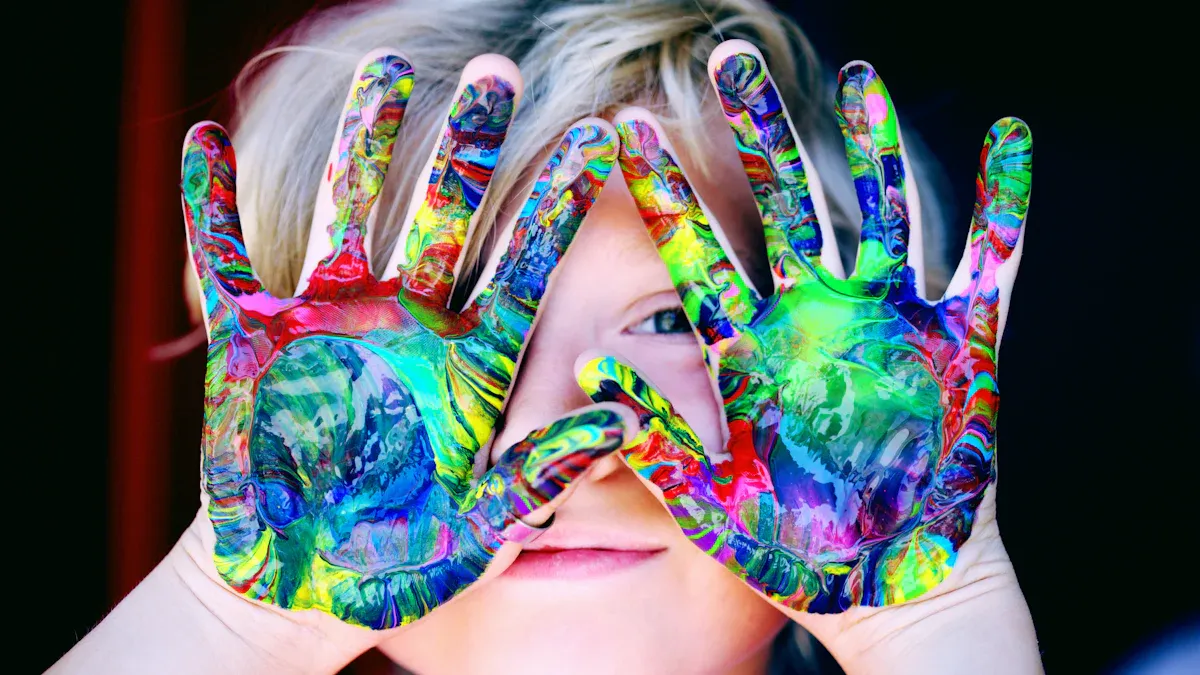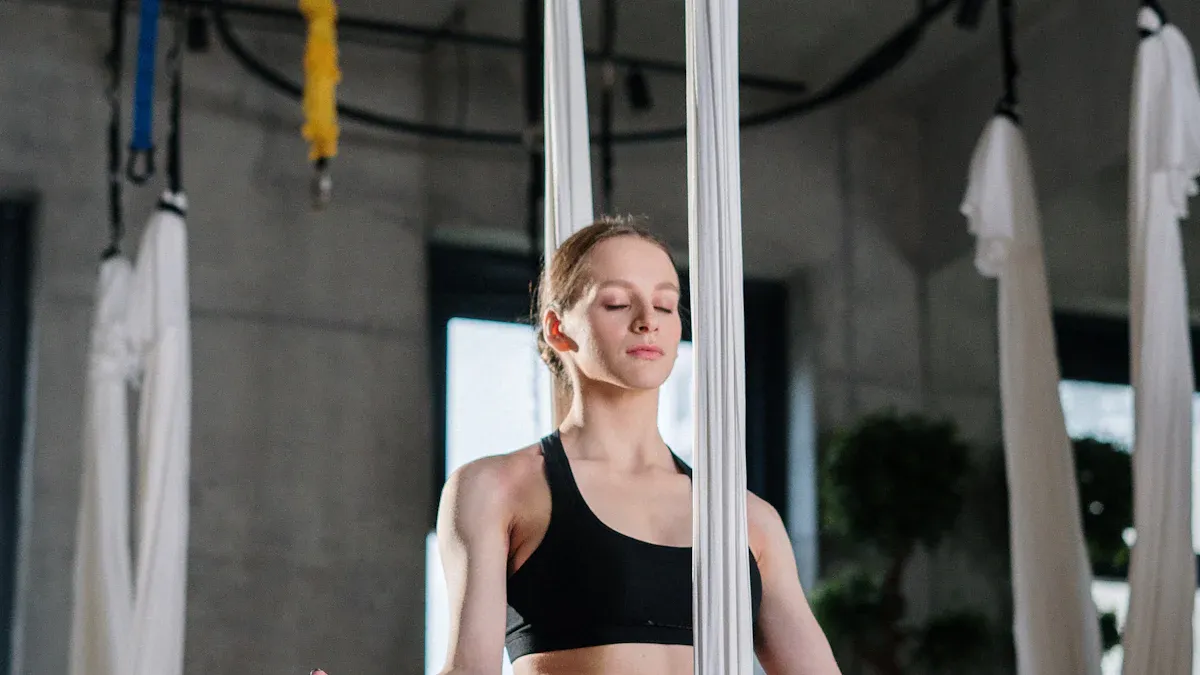


Spatial relationships refer to your ability to understand how objects connect and interact within a space. This skill helps you make sense of your physical environment and navigate it effectively. For example, when you arrange furniture or find your way through a crowded room, you rely on spatial awareness.
Everyday explorations, like observing how a child stacks blocks or solves puzzles, reveal how spatial skills develop. These abilities grow through exploration and visual learning. By improving your awareness, you can enhance your understanding of object placement and movement in your surroundings.
Key Takeaways
- Enhance spatial skills through engaging activities like puzzles, building blocks, and outdoor games to boost creativity and problem-solving.
- Utilize technology such as apps and virtual reality tools to make spatial learning interactive and enjoyable.
- Develop spatial awareness by practicing mindfulness and observing how objects relate, improving organization and navigation abilities.
What Are Spatial Relationships?

Definition and Key Concepts
Spatial relationships describe how objects relate to one another in space. This concept helps you understand positions, distances, and directions. For example, you use spatial awareness when identifying whether an object is above, below, or beside another. Spatial ability also involves recognizing patterns and visualizing changes in object placement. These skills are essential for navigating your environment and solving everyday problems.
Examples of Spatial Relationships
Navigating Physical Spaces
You rely on spatial relationships every time you move through a physical space. Walking in a crowded hallway without bumping into others or standing in line without invading someone’s personal space are common examples. Sports also depend on visual spatial relations, as players must judge distances and positions to succeed. Reading maps or using GPS further highlights how spatial reasoning concepts guide you in unfamiliar areas.
Understanding Object Placement
Spatial relationships also play a role in organizing and interacting with objects. Knowing which shoe goes on which foot or placing homework on the correct side of a folder demonstrates spatial awareness. Writing letters and numbers without reversing them requires strong visual spatial relations. Completing puzzles or arranging items in a locker are other examples of how you use spatial ability daily.
Spatial Awareness in Development
Early Childhood Spatial Skills
Spatial awareness begins to develop during early child development. The first 24 months are critical for expanding spatial relationships. During this sensory motor stage, children explore their environment through movement and experience. They learn object permanence, understanding that objects exist even when out of sight. Using spatial language like "under" or "beside" helps children describe their surroundings and express needs.
Evolving Spatial Reasoning Over Time
As children grow, their spatial reasoning skills improve. They gain better control over their bodies and learn to navigate their environment effectively. Knowledge of object categories and attributes allows them to organize their world mentally and physically. These skills continue to evolve, enabling children to tackle more complex tasks like reading maps, copying written work, and solving problems that require spatial reasoning concepts.
The Importance of Spatial Relationships in Daily Life

Navigation and Orientation
Using maps and GPS
Spatial intelligence plays a vital role when you use maps or GPS for navigation. These tools rely on your ability to interpret spatial relationships between landmarks, streets, and destinations. For example, understanding that a chair is next to a table mirrors how you recognize a building's location relative to a park. Spatial awareness helps you visualize routes and make decisions, such as turning left or right, without confusion. This skill becomes even more critical when navigating complex environments like urban areas or nature trails.
Finding your way in new environments
Exploring unfamiliar places requires strong spatial intelligence. You use spatial awareness to identify cardinal directions and relate objects to one another. For instance:
- Recognizing that a tree is beside a bench can help you orient yourself in a park.
- Using spatial reasoning to navigate public transport systems or drive efficiently.
- Applying these skills while hiking or exploring new cities ensures you stay on track.
By honing your spatial intelligence, you can confidently adapt to new surroundings.
Organization and Efficiency
Arranging functional spaces
Spatial relationships contribute significantly to organizing spaces for maximum efficiency. Whether arranging furniture at home or designing a workspace, understanding how objects interact spatially improves functionality. For example, placing related spaces next to each other enhances workflow. Overlapping spaces, like a kitchen and dining area, create a sense of unity and flow.
| Type of Spatial Relationship | Contribution to Efficiency | | --- | --- | | Adjacent Spaces | Improve efficiency by placing related spaces next to each other. | | Overlapping Spaces | Create a sense of unity and flow by having spaces overlap. |
Managing personal and professional areas
Spatial intelligence also helps you manage personal and professional spaces effectively. You might organize your desk to keep essential items within reach or arrange a classroom to promote learning. These decisions rely on your ability to assess spatial relationships and optimize layouts for productivity.
Communication and Collaboration
Giving clear directions
Clear communication often depends on spatial intelligence. When giving directions, you use spatial relationships to describe positions and distances. For example, saying, "The library is two blocks north of the park," helps others navigate accurately. This skill ensures your instructions are easy to follow, reducing confusion.
Understanding spatial cues in teamwork
Spatial relationships enhance collaboration by fostering interaction and movement. People naturally gravitate toward areas with high information density, like bulletin boards or shared screens. In team settings, spatial cues like terraces for informal discussions or communal screens displaying team activities encourage collaboration. These elements create focal points that bring people together, promoting teamwork and creativity.
How to Improve Spatial Relationships Awareness
Activities for Children
Building blocks and puzzles
Engaging your child in spatial relations activities like building blocks and puzzles strengthens their visual perceptual skills. These activities encourage them to visualize how pieces fit together, improving their understanding of spatial relationships. For example:
- Completing jigsaw puzzles helps develop problem-solving skills.
- Building towers with blocks teaches balance and object placement.
- Talking about where pieces go enhances their visual-spatial relationship understanding.
These hands-on tasks also foster creativity and logical thinking, making them ideal for early development.
Outdoor games and movement
Outdoor games provide excellent opportunities for your child to engage in movement activities that boost spatial awareness. Games like "Follow the Leader" improve coordination and interaction with their surroundings. Sports such as soccer or basketball teach them to judge distances and positions. You can also try:
- Playing hide-and-seek to explore directions.
- Acting out action songs to combine movement with spatial concepts.
- Using playground equipment to practice climbing and balancing.
These activities not only enhance spatial skills but also promote physical health and social interaction.
Strategies for Adults
Mindfulness and observation
Improving spatial awareness as an adult starts with mindfulness. Pay attention to how objects relate to each other in your environment. Observe the layout of spaces and practice visualizing changes. For example, rearranging furniture in your mind before moving it sharpens your spatial reasoning. Engaging in physical activities like dance or martial arts also enhances your ability to interpret spatial cues through movement.
Spatially challenging hobbies
Hobbies that challenge your spatial reasoning can significantly improve your skills. Try activities like:
- 3D modeling to practice mental manipulation of objects.
- Drawing or painting to visualize three-dimensional objects on a flat surface.
- Sports or martial arts to refine real-time spatial judgment.
These hobbies combine creativity with spatial problem-solving, making them both enjoyable and beneficial.
Tools and Technologies
Apps and games for spatial reasoning
Technology offers many tools to help you develop spatial awareness. Apps like "Peak" and "Lumosity" provide engaging challenges to improve spatial visualization. Educational websites such as Khan Academy offer courses focused on spatial reasoning. YouTube channels also provide visual demonstrations to enhance your understanding of spatial concepts.
Virtual reality for spatial training
Virtual reality (VR) takes spatial relations activities to the next level. VR immerses you in three-dimensional environments where you can navigate spaces and manipulate objects. This dynamic interaction improves your spatial reasoning and problem-solving skills. For example, VR applications allow you to explore virtual spaces, enhancing your ability to visualize and adapt to real-world environments.
Broader Impacts of Spatial Relationships Awareness
Personal Growth
Enhancing problem-solving skills
Improving spatial awareness directly strengthens your problem-solving abilities. This skill allows you to visualize scenarios and create mental images, which is essential for tackling complex challenges. For example, assembling furniture becomes easier when you can mentally rotate and align pieces before physically moving them. Spatial orientation, or understanding your position relative to objects, also plays a role. It helps you adapt to new environments and navigate unfamiliar spaces with confidence. These abilities not only make daily tasks more manageable but also foster personal growth by enhancing your capacity to think critically and solve problems effectively.
- Visualization helps you understand complex scenarios and boosts creativity.
- Mental rotation aids in practical tasks like assembling furniture.
- Spatial orientation improves navigation and adaptability.
Boosting creativity and innovation
Spatial relationships fuel creativity by enabling you to think outside the box. When you engage in activities like drawing, designing, or even rearranging a room, you rely on spatial reasoning to imagine new possibilities. This ability to visualize and manipulate objects mentally sparks innovative ideas. For instance, artists and designers often use spatial awareness to create unique compositions. By honing this skill, you can unlock your creative potential and approach challenges with fresh perspectives.
Professional Applications
Careers requiring spatial reasoning
Many professions depend heavily on spatial reasoning skills. Engineers use these abilities to design and troubleshoot complex systems. Architects rely on spatial awareness to create functional and visually appealing structures. In healthcare, surgeons and radiologists interpret imaging studies and navigate anatomy with precision. Creative industries, such as graphic design and industrial design, also demand strong spatial reasoning for developing visual products. Additionally, careers in technology, like virtual reality development, and logistics, such as supply chain management, require you to optimize layouts and processes efficiently.
- Engineering: Visualizing and designing systems.
- Architecture: Creating functional and aesthetic structures.
- Healthcare: Interpreting imaging and navigating anatomy.
- Design: Developing visual compositions.
- Technology: Designing user interactions in VR and gaming.
- Logistics: Optimizing storage and transportation.
Improving workplace collaboration
Spatial awareness enhances teamwork by fostering better communication and interaction. In collaborative environments, spaces designed with focal points, like whiteboard walls or shared screens, encourage movement and engagement. These areas naturally draw team members together, promoting the exchange of ideas. Dynamic spaces, such as terraces or coffee bars, also inspire creativity and serendipitous encounters. By understanding spatial relationships, you can create environments that boost collaboration and productivity.
- High-information areas, like shared screens, promote interaction.
- Focal nodes, such as coffee bars, encourage movement and engagement.
- Dynamic spaces inspire creativity and teamwork.
Spatial relationships are fundamental to understanding how objects interact in space. They influence your ability to navigate, organize, and communicate effectively. Developing spatial awareness enhances your daily life by improving problem-solving and decision-making skills. It also boosts professional success through increased productivity and better collaboration.
Improving spatial skills offers long-term benefits. You can visualize and adapt to your environment more effectively, leading to enhanced creativity and job performance. These skills empower you to tackle challenges with confidence and innovation. By practicing mindfulness, engaging in spatial activities, and using tools like apps or VR, you can strengthen your spatial reasoning over time.
Take the first step today. Actively develop your spatial awareness to unlock personal growth and professional opportunities.
FAQ
Spatial relationships refer to how objects relate to one another in space. You use this skill to understand positions, distances, and directions. For example, knowing that a chair is beside a table or visualizing how furniture fits in a room involves spatial reasoning.
You can improve spatial awareness by engaging in activities like puzzles, building blocks, or sports. These activities help you visualize object placement and movement. Apps and virtual reality tools also provide interactive ways to strengthen your spatial reasoning skills.
Spatial skills help you navigate, organize spaces, and communicate effectively. For instance, you use them to find your way in new environments, arrange furniture efficiently, or give clear directions. These abilities enhance problem-solving and decision-making in everyday tasks.
Yes, many careers rely on spatial reasoning. Architects, engineers, and designers use it to create and visualize structures. Surgeons and radiologists depend on it for precision. Even logistics and technology professionals apply spatial skills to optimize workflows and processes.
Spatial skills develop over time through practice and experience. While some individuals may have a natural aptitude, you can improve these abilities with targeted activities like drawing, sports, or using spatial reasoning apps.
Continue Reading About Spatial Relationships
2025 Best Data Integration Solutions and Selection Guide
Explore top data integration solutions for 2025, enhancing data management and operational efficiency with leading platforms like Fivetran and Talend.
Howard
Dec 19, 2024
Best Data Integration Platforms to Use in 2025
Explore the best data integration platforms for 2025, including cloud-based, on-premises, and hybrid solutions. Learn about key features, benefits, and top players.
Howard
Jun 20, 2024
15 Best Software Reporting Tools for 2025
Explore the top 15 software reporting tools for 2025. Compare features, pricing, and usability to find the best fit for your business needs.
Lewis
Oct 08, 2024


